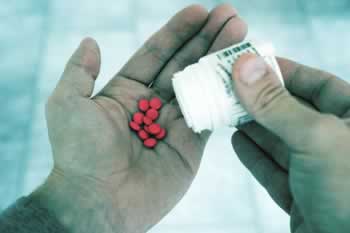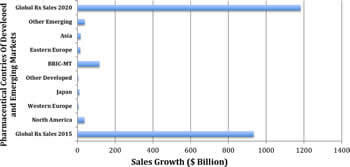Generic drugs play a crucial role in providing affordable medication options to patients worldwide. As we delve into the intricacies of generic drug markets in Europe and the United States, we’ll uncover fascinating insights into the pricing strategies, consumption patterns, and overall spending trends that shape these two distinct regions. Join me on this enlightening journey as we explore the similarities, differences, and unique characteristics of generic drug markets on both sides of the Atlantic.
The Rise of Generic Drugs: A Global Phenomenon
Generic drugs have revolutionized the pharmaceutical industry, offering cost-effective alternatives to brand-name medications. These bioequivalent versions of original drugs have gained significant traction in recent years, driven by factors such as patent expirations, healthcare cost containment measures, and increasing patient awareness.
Defining Generic Drugs
Before we dive deeper into the comparison between European and American generic drug markets, let’s establish a clear understanding of what generic drugs are. Generic drugs are pharmaceutical products that contain the same active ingredients as their brand-name counterparts and are designed to be interchangeable with them. They undergo rigorous testing to ensure they meet the same quality, safety, and efficacy standards as the original drugs.
The Global Impact of Generic Drugs
The rise of generic drugs has had a profound impact on healthcare systems worldwide. By offering more affordable alternatives to brand-name medications, generics have improved access to essential medicines for millions of patients. According to the Association for Accessible Medicines, generic drugs saved the U.S. healthcare system $313 billion in 2019 alone.
“Generic medicines are the backbone of affordable healthcare systems worldwide, providing patients with access to safe, effective, and high-quality medicines at a fraction of the cost of brand-name drugs.” – World Health Organization
European Generic Drug Market: An Overview
The European generic drug market is a complex and diverse landscape, with significant variations across different countries. Let’s explore some key aspects of this market and how it compares to its American counterpart.
Market Size and Growth
The European generic drug market has experienced steady growth in recent years, driven by factors such as aging populations, increasing chronic disease prevalence, and government initiatives to promote generic drug use. According to a report by Grand View Research, the European generic drug market size was valued at $52.2 billion in 2020 and is expected to grow at a compound annual growth rate (CAGR) of 5.2% from 2021 to 2028.
Regulatory Framework
One of the defining characteristics of the European generic drug market is its regulatory framework. The European Medicines Agency (EMA) plays a central role in the evaluation and approval of generic drugs across the European Union. However, individual member states also have their own national regulatory bodies that oversee the marketing and distribution of generic drugs within their borders.
Pricing Mechanisms
Pricing strategies for generic drugs in Europe vary significantly from country to country. Some nations, like the United Kingdom, employ a free-market approach, while others, such as France and Spain, implement strict price control measures. Many European countries use reference pricing systems, where the price of a generic drug is set based on the prices of similar products in other countries.
Market Penetration
The penetration of generic drugs in European markets varies widely across countries. For instance, in the United Kingdom and Germany, generic drugs account for a significant portion of the pharmaceutical market, with market shares exceeding 80% in volume. In contrast, countries like Italy and Spain have historically had lower generic drug penetration rates, although these have been increasing in recent years.
The United States Generic Drug Market: A Different Landscape
Across the Atlantic, the United States presents a unique and dynamic generic drug market with its own set of characteristics and challenges. Let’s examine some key aspects of the American generic drug landscape.
Market Size and Growth
The United States boasts the world’s largest generic drug market, with a size of $115.2 billion in 2019. This market is projected to reach $190.3 billion by 2027, growing at a CAGR of 6.5% from 2020 to 2027. The sheer size and growth potential of the U.S. market make it an attractive destination for generic drug manufacturers worldwide.
Regulatory Environment
In the United States, the Food and Drug Administration (FDA) is responsible for regulating generic drugs. The FDA’s approval process for generic drugs is rigorous, ensuring that these medications meet the same quality and safety standards as their brand-name counterparts. The Hatch-Waxman Act of 1984 played a crucial role in streamlining the approval process for generic drugs, leading to increased competition and lower prices.
Pricing Dynamics
Unlike many European countries, the United States generally adopts a free-market approach to generic drug pricing. This approach has led to significant price competition among manufacturers, resulting in lower prices for many generic drugs. However, it has also contributed to price volatility and occasional shortages of certain generic medications.
Market Penetration
Generic drugs have achieved significant market penetration in the United States. According to the Association for Accessible Medicines, generic drugs accounted for 90% of all prescriptions filled in the U.S. in 2019, while only representing 20% of prescription drug spending. This high level of penetration has contributed to substantial cost savings for patients and the healthcare system as a whole.
Price Comparison: Europe vs. United States
One of the most striking differences between the European and American generic drug markets lies in their pricing structures. Let’s take a closer look at how prices compare across these two regions.
Overall Price Levels
Generally speaking, generic drug prices in the United States tend to be higher than those in European countries. A study published in the Journal of the American Medical Association (JAMA) found that the median price for generic drugs in the U.S. was $6.94 per dose, compared to $1.62 in the United Kingdom.
Price Variation
While European countries often have more stable generic drug prices due to government regulations and reference pricing systems, the United States experiences greater price volatility. This volatility can lead to both extremely low prices for some generic drugs and unexpectedly high prices for others.
Factors Influencing Price Differences
Several factors contribute to the price differences between European and American generic drug markets:
- Regulatory Environment: The stricter price controls in many European countries help keep generic drug prices lower and more stable.
- Market Size: The larger U.S. market allows for greater economies of scale, potentially leading to lower production costs.
- Healthcare System Structure: The fragmented nature of the U.S. healthcare system, with multiple payers and negotiators, can lead to higher prices compared to the more centralized systems in many European countries.
- Patent Laws: Differences in patent protection and exclusivity periods can affect the timing of generic drug entry into the market, influencing prices.
Volume Trends: Consumption Patterns in Europe and the United States
Understanding the volume of generic drugs consumed in each market provides valuable insights into patient behavior and healthcare practices. Let’s examine the consumption patterns in Europe and the United States.
European Consumption Trends
Generic drug consumption in Europe varies significantly across countries. Some key trends include:
- High Penetration in Northern Europe: Countries like the United Kingdom, Germany, and the Netherlands have high generic drug consumption rates, often exceeding 80% of total prescription volume.
- Growing Acceptance in Southern Europe: Countries like Italy and Spain have traditionally had lower generic drug consumption rates but have seen increasing acceptance in recent years due to government initiatives and cost-containment measures.
- Variation by Therapeutic Area: Generic drug consumption tends to be higher in therapeutic areas with well-established treatment protocols, such as cardiovascular diseases and diabetes.
United States Consumption Trends
The United States has seen a steady increase in generic drug consumption over the past few decades. Some notable trends include:
- High Overall Penetration: As mentioned earlier, generic drugs account for 90% of all prescriptions filled in the U.S., indicating widespread acceptance among patients and healthcare providers.
- Variation by Insurance Type: Generic drug use tends to be higher among patients with public insurance (e.g., Medicare, Medicaid) compared to those with private insurance.
- Therapeutic Area Differences: Similar to Europe, generic drug consumption in the U.S. varies by therapeutic area, with higher rates in chronic disease management and lower rates in specialty medications.
Spending Patterns: Allocating Resources for Generic Drugs
The allocation of healthcare resources for generic drugs differs significantly between Europe and the United States. Let’s explore the spending patterns in these two regions.
European Spending on Generic Drugs
European countries generally spend a smaller proportion of their total pharmaceutical expenditure on generic drugs compared to the United States. Some key observations include:
- Cost Containment: Many European countries use generic drugs as a tool for controlling healthcare costs, resulting in lower overall spending on these medications.
- Reference Pricing: The use of reference pricing systems in some European countries helps keep generic drug prices and spending in check.
- Country-Specific Variations: Spending on generic drugs varies widely across European countries, with some nations allocating a larger share of their pharmaceutical budget to generics than others.
United States Spending on Generic Drugs
The United States presents a unique spending pattern for generic drugs:
- High Volume, Lower Proportion of Spending: While generic drugs account for 90% of prescriptions filled, they only represent 20% of prescription drug spending in the U.S..
- Cost Savings: Generic drugs have contributed to significant cost savings in the U.S. healthcare system, with estimates suggesting savings of over $2 trillion in the past decade.
- Specialty Generic Drugs: The emergence of specialty generic drugs has led to increased spending in certain therapeutic areas, despite overall cost savings from generic use.
Market Dynamics: Competition and Consolidation
The competitive landscape and market structure of generic drug industries in Europe and the United States have significant implications for prices, volumes, and spending. Let’s examine these dynamics in both regions.
European Market Dynamics
The European generic drug market is characterized by:
- Fragmentation: The market is relatively fragmented, with numerous small and medium-sized players operating alongside larger pharmaceutical companies.
- Cross-Border Competition: The European Union’s single market allows for increased competition across national borders, potentially leading to lower prices.
- Government Involvement: Many European governments actively promote generic drug use through various policies and incentives.
United States Market Dynamics
The U.S. generic drug market presents a different picture:
- Consolidation: The market has seen significant consolidation in recent years, with larger pharmaceutical companies acquiring smaller generic drug manufacturers.
- Price Competition: Intense price competition among manufacturers has led to both benefits (lower prices) and challenges (potential quality issues, shortages).
- Authorized Generics: The presence of authorized generics (brand-name drugs marketed as generics) adds another layer of complexity to the competitive landscape.
Policy Implications: Shaping the Future of Generic Drug Markets
The differences between European and American generic drug markets have important policy implications for both regions. Let’s explore some key considerations for policymakers and industry stakeholders.
European Policy Considerations
- Harmonization: Further harmonization of regulatory processes across EU member states could streamline generic drug approvals and market entry.
- Incentives for Innovation: Balancing cost containment measures with incentives for continued innovation in the generic drug sector is crucial for long-term market sustainability.
- Patient Education: Increasing patient awareness and acceptance of generic drugs in countries with lower penetration rates could lead to greater cost savings.
United States Policy Considerations
- Price Transparency: Implementing measures to increase price transparency in the generic drug market could help address issues of price volatility and unexpected price hikes.
- Supply Chain Resilience: Developing policies to strengthen the generic drug supply chain and prevent shortages is crucial for ensuring consistent access to affordable medications.
- Balancing Competition and Quality: Striking a balance between promoting price competition and maintaining high-quality standards for generic drugs remains an ongoing challenge for policymakers.
The Role of Technology in Shaping Generic Drug Markets
Advancements in technology are playing an increasingly important role in shaping the future of generic drug markets in both Europe and the United States. Let’s explore some key technological trends and their potential impact.
Digital Health Initiatives
The rise of digital health technologies is transforming the way patients interact with healthcare systems and access medications. In both Europe and the United States, digital health initiatives are:
- Improving Medication Adherence: Mobile apps and smart pill dispensers are helping patients better manage their medication regimens, potentially increasing the use of generic drugs.
- Enhancing Prescription Practices: Electronic prescribing systems can prompt healthcare providers to consider generic alternatives, potentially increasing generic drug utilization.
- Facilitating Remote Healthcare: Telemedicine platforms are making it easier for patients to consult with healthcare providers and obtain prescriptions, which could impact generic drug consumption patterns.
Advanced Manufacturing Technologies
Innovations in manufacturing processes are reshaping the generic drug industry:
- Continuous Manufacturing: This technology allows for more efficient and flexible production of generic drugs, potentially reducing costs and improving supply chain resilience.
- 3D Printing: While still in its early stages, 3D printing of pharmaceuticals could revolutionize the production and distribution of generic drugs in the future.
- Quality by Design (QbD): This approach to pharmaceutical development and manufacturing is helping to ensure consistent quality in generic drugs, potentially addressing concerns about their efficacy and safety.
The Impact of COVID-19 on Generic Drug Markets
The global COVID-19 pandemic has had significant implications for generic drug markets in both Europe and the United States. Let’s examine some of the key impacts and potential long-term consequences.
Supply Chain Disruptions
The pandemic exposed vulnerabilities in global pharmaceutical supply chains, affecting both regions:
- Increased Focus on Local Production: Both European and American policymakers are now considering measures to increase domestic production of generic drugs to reduce reliance on foreign suppliers.
- Stockpiling and Shortages: The pandemic led to increased stockpiling of certain generic drugs, resulting in temporary shortages and price fluctuations in both markets.
Shift in Demand Patterns
The pandemic altered demand patterns for various medications:
- Increased Demand for Certain Generics: Drugs used in the treatment of COVID-19 symptoms saw a surge in demand, affecting their availability and pricing.
- Delayed Non-Essential Treatments: The postponement of non-essential medical procedures during lockdowns led to reduced demand for some generic drugs, impacting market dynamics.
Accelerated Digitalization
The pandemic accelerated the adoption of digital technologies in healthcare:
- Telemedicine Boom: The rapid growth of telemedicine services during the pandemic could have long-term effects on prescription patterns and generic drug utilization.
- E-pharmacy Growth: The increased use of online pharmacies during lockdowns may influence future distribution channels for generic drugs in both regions.
Future Outlook: Convergence or Divergence?
As we look to the future of generic drug markets in Europe and the United States, it’s natural to wonder whether these two regions will see greater convergence or continued divergence in their approaches. Let’s explore some potential scenarios and their implications.
Potential for Convergence
Several factors could lead to greater alignment between European and American generic drug markets:
- Global Harmonization Efforts: Ongoing initiatives to harmonize regulatory standards across regions could lead to more similar approval processes and market dynamics.
- Shared Challenges: Both regions face common challenges, such as ensuring supply chain resilience and balancing cost containment with innovation, which could lead to similar policy responses.
- Cross-Border Collaborations: Increased collaboration between European and American pharmaceutical companies could result in more aligned market practices.
Factors Driving Continued Divergence
On the other hand, several factors may contribute to ongoing differences between the two markets:
- Healthcare System Structures: The fundamental differences in healthcare system organization between Europe and the United States are likely to continue influencing generic drug market dynamics.
- Cultural Attitudes: Variations in cultural attitudes towards generic drugs and healthcare in general may persist, affecting consumption patterns and market penetration.
- Political and Economic Factors: Differences in political priorities and economic conditions between the two regions could lead to divergent policy approaches in the generic drug sector.
Key Takeaways
As we conclude our comprehensive exploration of generic drug markets in Europe and the United States, let’s recap the key takeaways:
- The European generic drug market is characterized by diverse regulatory frameworks, pricing mechanisms, and market penetration rates across countries.
- The United States boasts the world’s largest generic drug market, with high market penetration and a free-market approach to pricing.
- Generic drug prices in the United States tend to be higher and more volatile compared to those in European countries.
- European countries generally have more stable generic drug prices due to government regulations and reference pricing systems.
- Generic drug consumption patterns vary significantly across European countries, while the United States has achieved high overall penetration.
- The United States spends a smaller proportion of its total pharmaceutical expenditure on generic drugs compared to the volume of generics consumed.
- Market dynamics differ between the regions, with Europe experiencing more fragmentation and the U.S. seeing increased consolidation.
- Technological advancements, such as digital health initiatives and advanced manufacturing technologies, are shaping the future of generic drug markets in both regions.
- The COVID-19 pandemic has exposed vulnerabilities in supply chains and accelerated digital transformation in both European and American generic drug markets.
- The future may see some convergence between European and American markets, but fundamental differences in healthcare systems and cultural attitudes are likely to maintain some level of divergence.
Conclusion: Bridging the Atlantic Divide
As we’ve seen throughout this comprehensive analysis, the generic drug markets in Europe and the United States share some similarities but also exhibit significant differences in terms of prices, volumes, and spending. These differences stem from a complex interplay of factors, including regulatory frameworks, healthcare system structures, market dynamics, and cultural attitudes.
Both regions have made substantial progress in leveraging generic drugs to improve access to affordable medications and contain healthcare costs. However, each faces unique challenges and opportunities in further optimizing their generic drug markets.
Moving forward, policymakers, industry stakeholders, and healthcare professionals on both sides of the Atlantic can benefit from learning from each other’s experiences. By fostering dialogue, sharing best practices, and collaborating on common challenges, Europe and the United States can work towards more efficient, resilient, and patient-centric generic drug markets.
As the global healthcare landscape continues to evolve, driven by technological advancements, demographic shifts, and emerging health challenges, the role of generic drugs in ensuring accessible and affordable healthcare will only grow in importance. By understanding and addressing the nuances of their respective generic drug markets, Europe and the United States can pave the way for a future where high-quality, cost-effective medications are available to all who need them.
FAQs
- Q: Why are generic drug prices generally higher in the United States compared to European countries?
A: Generic drug prices tend to be higher in the U.S. due to factors such as the free-market pricing approach, the fragmented nature of the healthcare system with multiple payers, and less stringent government price controls compared to many European countries. - Q: How do regulatory processes for generic drugs differ between Europe and the United States?
A: In Europe, the European Medicines Agency (EMA) oversees the evaluation and approval of generic drugs across the EU, with individual member states also having national regulatory bodies. In the U.S., the Food and Drug Administration (FDA) is responsible for regulating generic drugs through a rigorous approval process. - Q: What impact has the COVID-19 pandemic had on generic drug markets in both regions?
A: The pandemic has exposed vulnerabilities in supply chains, led to temporary shortages and price fluctuations for certain drugs, and accelerated the adoption of digital health technologies in both European and American generic drug markets. - Q: How do generic drug consumption patterns differ between Europe and the United States?
A: Generic drug consumption varies significantly across European countries, with higher penetration rates in Northern Europe and lower rates in Southern Europe. The United States has achieved high overall generic drug penetration, accounting for 90% of all prescriptions filled. - Q: What role does technology play in shaping the future of generic drug markets?
A: Technology is influencing generic drug markets through digital health initiatives that improve medication adherence and prescription practices, advanced manufacturing technologies that enhance production efficiency, and innovations like 3D printing that could revolutionize drug production and distribution in the future.
References:
: https://www.grandviewresearch.com/industry-analysis/europe-generic-drug-market
: https://www.fda.gov/drugs/generic-drugs/generic-drug-facts
: https://accessiblemeds.org/resources/blog/2019-generic-drug-and-biosimilars-access-savings-us-report
: https://jamanetwork.com/journals/jama/fullarticle/2762310
: https://www.ncbi.nlm.nih.gov/pmc/articles/PMC6822918/























